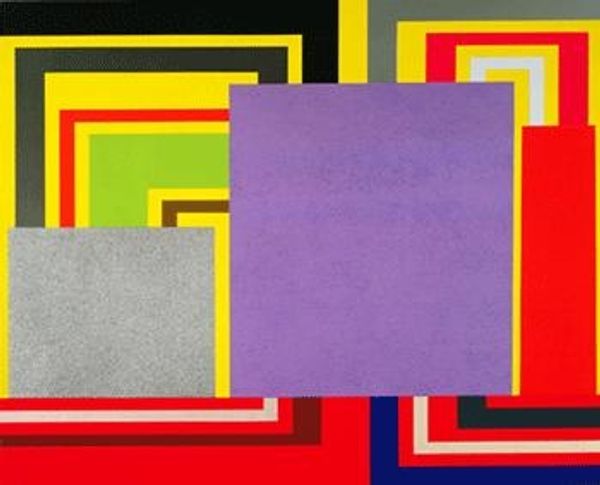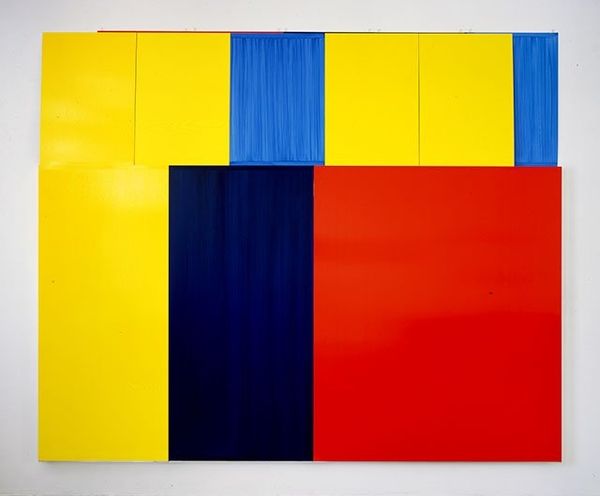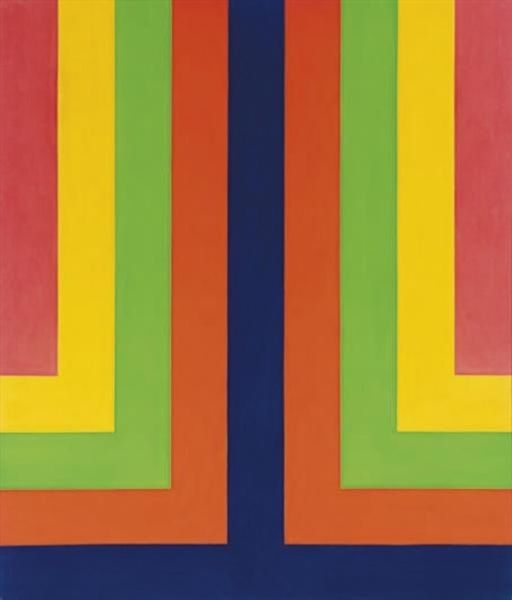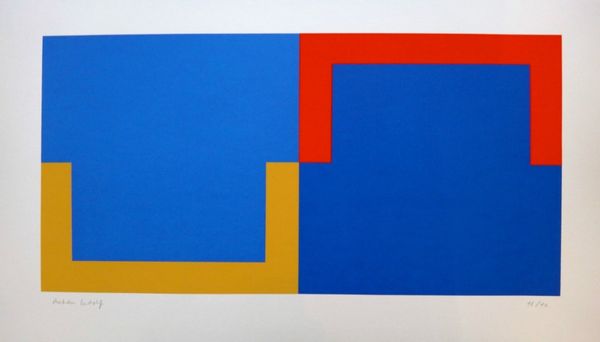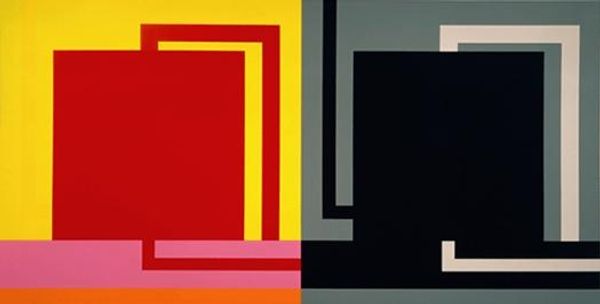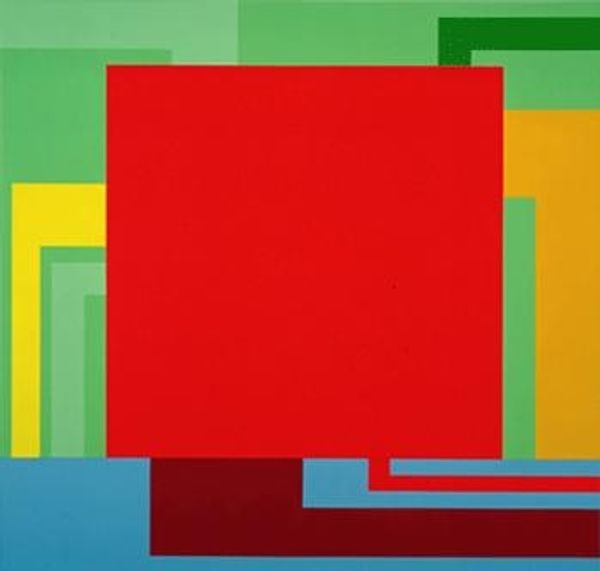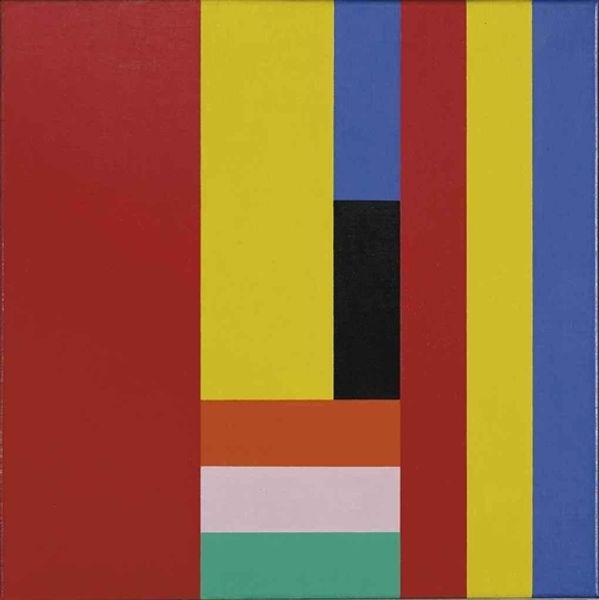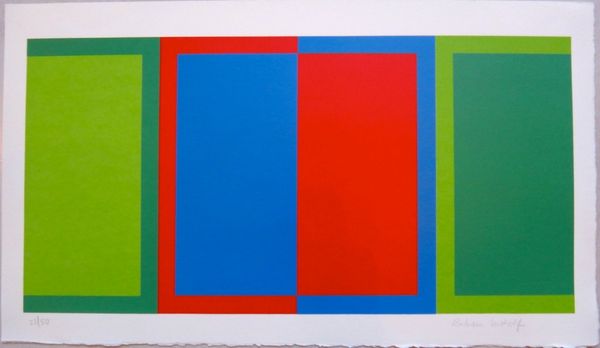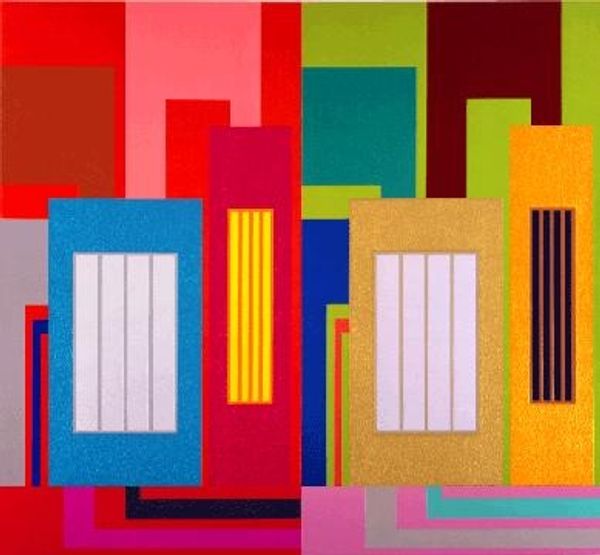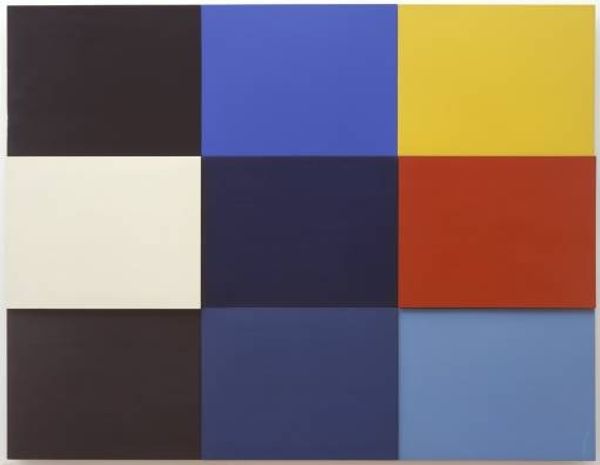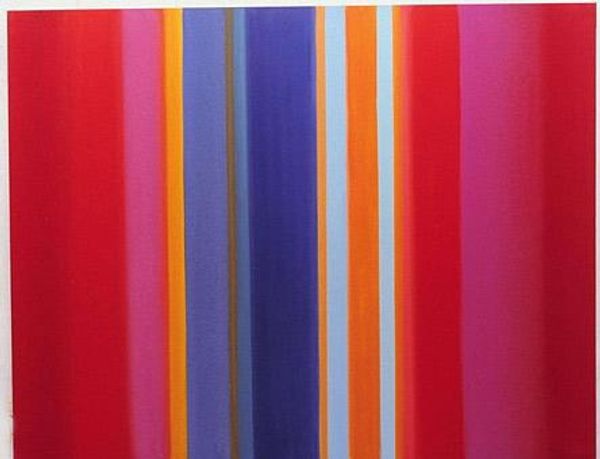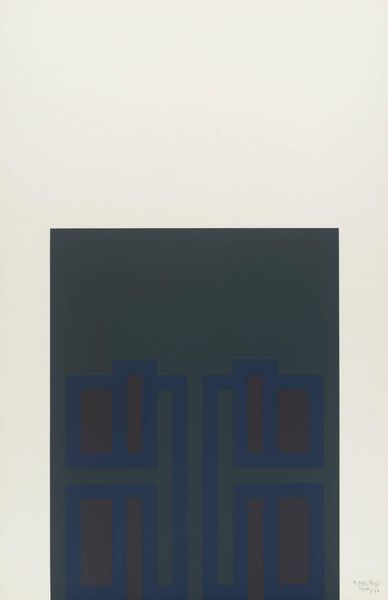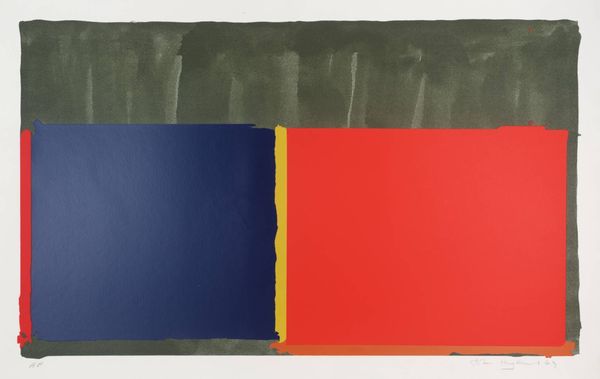
Copyright: Peter Halley,Fair Use
Curator: The boldness of those hard edges immediately strikes me! It feels almost... assertive. Editor: I find myself intrigued by Peter Halley's "A Perfect World," created in 1993 with acrylic on canvas. Halley often explored themes of confinement and connection through geometric abstraction. This particular piece appears to follow his distinct style. Curator: Confinement is a strong read, definitely coming through. That square in the middle that seems like a cell window? That throws the whole composition into question. And the name itself feels deeply ironic. Editor: Indeed. Halley uses geometric forms to depict "prisons" and "cells" interconnected by "conduits." These elements reflect his concerns about the social structures and systems of power that permeate our lives. The colors—the vibrant orange juxtaposed against the muted grey—amplify that tension, a system seemingly vibrant but ultimately incarcerating. Curator: I am curious to hear about the influence of thinkers like Michel Foucault on Halley's art. The emphasis on these spatial relationships and their impact on subjectivity, really invites you to consider the relationship between the individual and systemic forces. Editor: It certainly does. And it reflects how power operates within social spaces. Halley used a Day-Glo palette and simple shapes as a strategy, to be read as both visually striking and semantically rich. Curator: But even stripped of that theoretical baggage, the sheer geometry of it is compelling. The relationships between the colors themselves and their forms create an atmosphere of disquiet, a feeling of systems about to come apart. It also recalls that early work from Mondrian, but with an angst not visible at first sight. Editor: Perhaps we are drawn in because it offers a framework through which to question the narratives of progress and control that still shape society today. Curator: Exactly, questioning these imposed narratives is exactly the type of interrogation that propels viewers into reconsidering systems and power structures. Editor: I’d say this visual language achieves a potent message. Thanks for this illuminating dialogue! Curator: Absolutely! I find the discourse of this painting is still incredibly vital today.
Comments
No comments
Be the first to comment and join the conversation on the ultimate creative platform.
